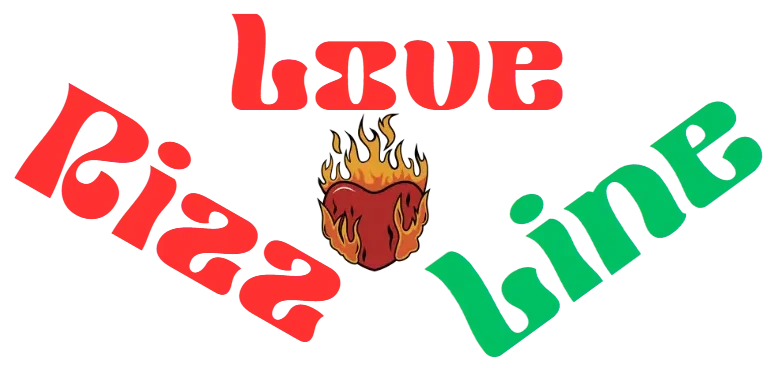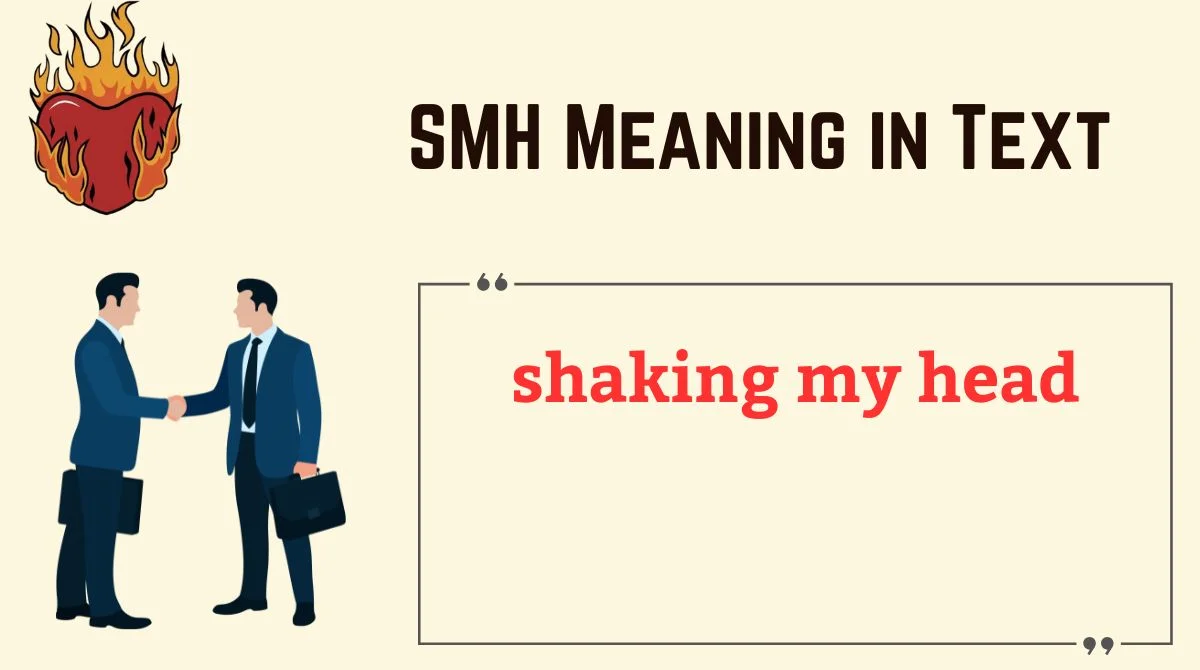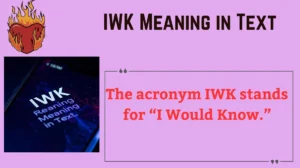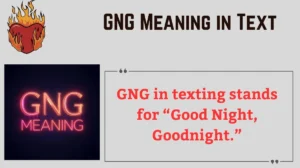Last updated on October 19th, 2025 at 07:11 am
Short forms have taken over digital conversations. Among them, SMH pops up everywhere—from tweets to TikTok comments to dating app chats.
If you’ve ever paused and wondered what it stands for, how to use it, or when to avoid it, you’re in the right place.
This guide explains everything about the SMH meaning in text, from its roots to practical usage tips.
Definition and Core Meaning of SMH
At its simplest, SMH stands for “shaking my head.” People type it when they’re disappointed, frustrated, or amused by something that doesn’t make sense. It’s a shorthand for physically shaking your head in disbelief.
- Example:
- Friend: “I just spent $100 on a candle.”
- You: “SMH…”
- Tone conveyed: disbelief, mild annoyance, sometimes lighthearted humor.
Unlike “LOL,” you almost never say “S-M-H” out loud; it’s primarily written, though some people jokingly pronounce it as “smuh” in conversation.
SMH Meaning in Text from a Guy 🤦♂️

When a guy texts “SMH,” it means “Shaking My Head.” He’s using it to show disbelief, disappointment, or mild frustration — but the real meaning depends on his tone and the context.
Here’s how to read it:
- 😅 Playful tone: “You really did that? SMH 😂” → He’s teasing you or finding it funny.
- 😐 Annoyed tone: “Bro, you’re late again… SMH.” → He’s genuinely disappointed or frustrated.
- 😏 Flirty tone: “SMH, you’re too cute for this 😌” → He’s pretending to be annoyed, but actually being sweet or playful.
So, when a guy says SMH, it’s not always serious — sometimes it’s just sarcastic, funny, or even flirty.
Pay attention to his emojis and the tone — they reveal whether it’s light-hearted or real frustration.
👉 Quick Meaning:
SMH (from a guy) = Shaking my head → used to express disbelief, teasing, or light annoyance.
Origins and Evolution
Slang spreads fast online, but SMH has been around for decades.
- Earliest documented use: Urban Dictionary added “SMH” in 2004, defining it as “shaking my head.”
- Early platforms: SMS texting, AOL chatrooms, BlackBerry Messenger, and early forums.
- Rise to mainstream: Twitter and Facebook in the late 2000s turned it into a universal reaction.
The meaning has stayed consistent—expressing disapproval or disbelief—but the tone shifted. Today, SMH can also signal playful teasing or exasperated humor.
Practical Usage in Text and Social Media
SMH thrives in informal settings. You’ll see it in comment sections, memes, and casual texts. Here’s how it typically appears:
| Context | Example Message | Tone |
|---|---|---|
| Disbelief at news | “The concert sold out in 5 minutes. SMH…” | Shock/disappointment |
| Mild criticism | “You forgot your password again? SMH” | Light scolding |
| Amused reaction | “He wore socks with sandals. SMH 😂” | Playful ridicule |
| Sarcasm/irony | “Won the lottery but lost the ticket. SMH” | Wry humor |
Tips for natural use:
- Place SMH at the end of a sentence for emphasis.
- Pair it with emojis to show tone (😔, 🤦, 😂).
- Don’t overuse it—too many SMHs can sound dismissive.
Common Misinterpretations
Because acronyms spread quickly, they often pick up wrong meanings. SMH is frequently misread as “so much hate” or “smash.” Neither is correct. Always assume it means “shaking my head” unless the surrounding context makes it obvious otherwise.
You might also see SMDH (“shaking my damn head”) or SMFH (“shaking my [explicit] head”), which intensify the expression. Recognizing these keeps you from misunderstanding tone in heated conversations.
Variants, Related Abbreviations, and Alternatives
When you know the landscape of similar terms, you can pick the one that matches your tone.
- SMDH: stronger disappointment or frustration.
- SMFH: explicit version, usually in anger.
- Facepalm 🤦: visual emoji equivalent, often used instead of SMH.
- LOL / LMAO: express laughter, not disapproval, but sometimes paired with SMH (“SMH LOL”).
- FML: (“f*** my life”) conveys frustration with one’s own situation, not someone else’s.
| Abbreviation | Meaning | Tone |
|---|---|---|
| SMH | Shaking my head | Disbelief, mild scorn |
| SMDH | Shaking my damn head | Stronger frustration |
| SMFH | Shaking my [explicit] head | Anger/disgust |
| 🤦 Facepalm | Emoji for exasperation | Visual reaction |
How to Respond to SMH
If someone sends you SMH, your reply should match their tone.
Examples:
- They’re disappointed in you:
- Them: “You left your phone at home again. SMH.”
- You: “I know, my bad! I’ll be more careful.”
- They’re joking:
- Them: “I just ate pizza for breakfast. SMH 😂”
- You: “Living your best life!”
- They’re upset:
- Them: “You forgot our meeting. SMH.”
- You: “I’m really sorry. Won’t happen again.”
By reading context, you can tell whether to apologize, laugh along, or explain yourself.
Cultural and Regional Nuances
Although SMH meaning in text is universal in English-speaking spaces, its frequency varies.
- United States & Canada: extremely common across Twitter, Instagram, Reddit.
- UK & Ireland: common but sometimes replaced with “tut” or “tsk” in speech.
- Australia & New Zealand: used similarly to the US but slightly less frequently in offline slang.
In non-English-speaking online communities, people may use local equivalents. For example, French speakers might type “pfff” or “mdr” for reactions, and Spanish speakers might use “no mames” or “ugh” for frustration.
Presence in Niche Communities and Dating Apps
SMH appears heavily in places where reactions are quick and text-based:
- Twitter: reaction to news headlines or celebrity posts.
- Reddit: common in comment threads to express disapproval of a story.
- TikTok: in captions or comments reacting to videos.
- Dating apps: used sparingly, often to tease (“You don’t like pizza? SMH”).
Tone matters. On dating apps, SMH can come off as playful or judgmental depending on punctuation and emojis.
Offensive or Hidden Connotations
Despite rumors, SMH itself isn’t offensive. It’s a mild reaction. However, context can change perception:
- When combined with insults (“SMH at you idiots”), it becomes harsh.
- Using SMH repeatedly in a conversation can seem dismissive or condescending.
Understanding this helps you avoid unintentional offense.
Professional and Workplace Considerations
In business settings, acronyms like SMH rarely belong in formal messages. An email to your boss reading “SMH at this project” can look unprofessional.
Safer alternatives:
- “I’m disappointed to see…”
- “This is frustrating…”
- “I can’t believe this happened…”
When it might be acceptable:
- Internal Slack chats among close teammates who already use informal slang.
- Casual, friendly workplaces with established norms.
If unsure, skip SMH and use plain language.
Quick Reference Table
| Term | Full Form | Tone/Use Case | Safe for Work? |
|---|---|---|---|
| SMH | Shaking my head | Mild disbelief or frustration | Usually no |
| SMDH | Shaking my damn head | Stronger frustration | No |
| SMFH | Shaking my [explicit] head | Anger/disgust | No |
| Facepalm 🤦 | Visual reaction | Exasperation/humor | Yes |
SMH Meaning in Text from a Girl 🙆♀️
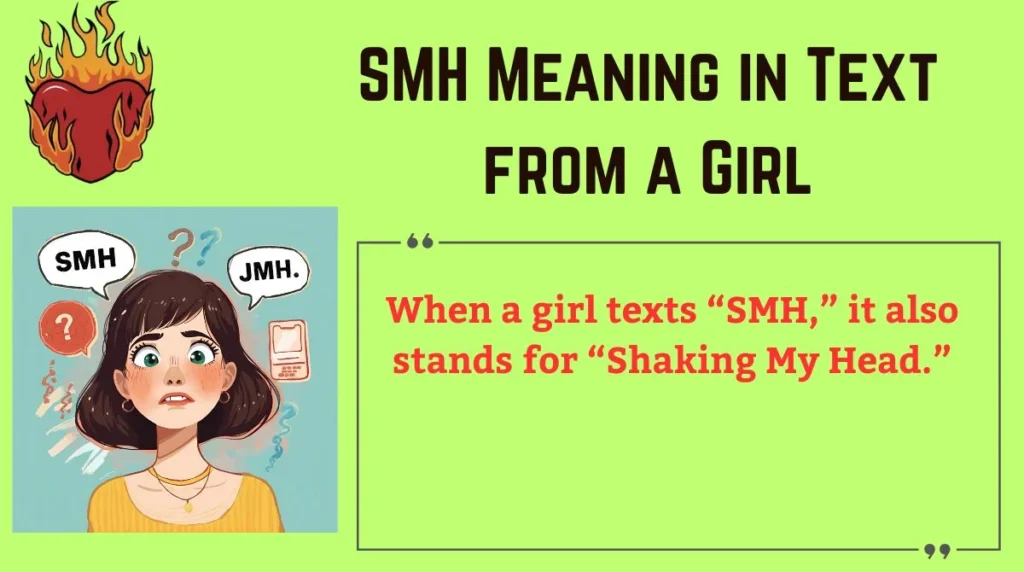
When a girl texts “SMH,” it also stands for “Shaking My Head.” But girls often use it in a more expressive or emotional way — to show surprise, amusement, or disbelief (sometimes all at once 😅).
Here’s what it can mean:
- 😆 Funny reaction: “SMH, you’re impossible 😂” → She’s amused or playfully annoyed.
- 🙄 Sarcastic tone: “Of course he forgot again… SMH.” → She’s rolling her eyes.
- 💞 Flirty tone: “SMH, why are you like this 😜” → She’s teasing you in a cute way.
Basically, SMH from a girl can mean she’s shocked, amused, or pretending to be upset — but usually in a fun, expressive, or flirty tone.
👉 Quick Meaning:
SMH (from a girl) = Shaking my head → used to express disbelief, teasing, or playful annoyance.
Frequently Asked Questions About SMH Meaning in Text
Does SMH mean the same on Instagram and TikTok?
Yes. Across major platforms, SMH still means “shaking my head.” Only tone shifts based on emojis or captions.
Is there a plural or past-tense form?
No official version exists. People simply keep using SMH, even when referring to past events.
What’s the difference between SMH and facepalm?
SMH is verbal shorthand; facepalm is a visual emoji. Both signal disbelief but facepalm looks more humorous.
Can SMH be positive?
Rarely. Occasionally used jokingly (“She surprised me with cake. SMH!”) to show mock disbelief.
Case Study: SMH in Viral Tweets
In 2022, a viral tweet about ticket prices read:
“They’re charging $50 for parking at the concert. SMH.”
That single acronym summed up thousands of replies echoing disappointment. Media outlets picked up the tweet, proving how one three-letter term can convey a collective reaction faster than a sentence.
Conclusion
The acronym SMH meaning in text is straightforward—“shaking my head”—but its implications are nuanced. It signals disbelief, frustration, or playful exasperation depending on context.
To use it effectively:
- Reserve it for informal settings.
- Read tone carefully before replying.
- Avoid overuse in professional spaces.
As language keeps evolving online, mastering small but powerful terms like SMH helps you communicate more clearly and connect with others in digital conversations.

Mark Peter is the creative mind behind RizzleLineLove.com, your go-to hub for witty, flirty, and downright hilarious pick-up lines. With a passion for blending humor and charm, Mark crafts content that sparks conversations, breaks the ice, and adds a playful twist to everyday moments.
Whether you’re looking to impress your crush, make your friends laugh, or spice up your social media captions, his work is all about helping you connect — one clever line at a time.
